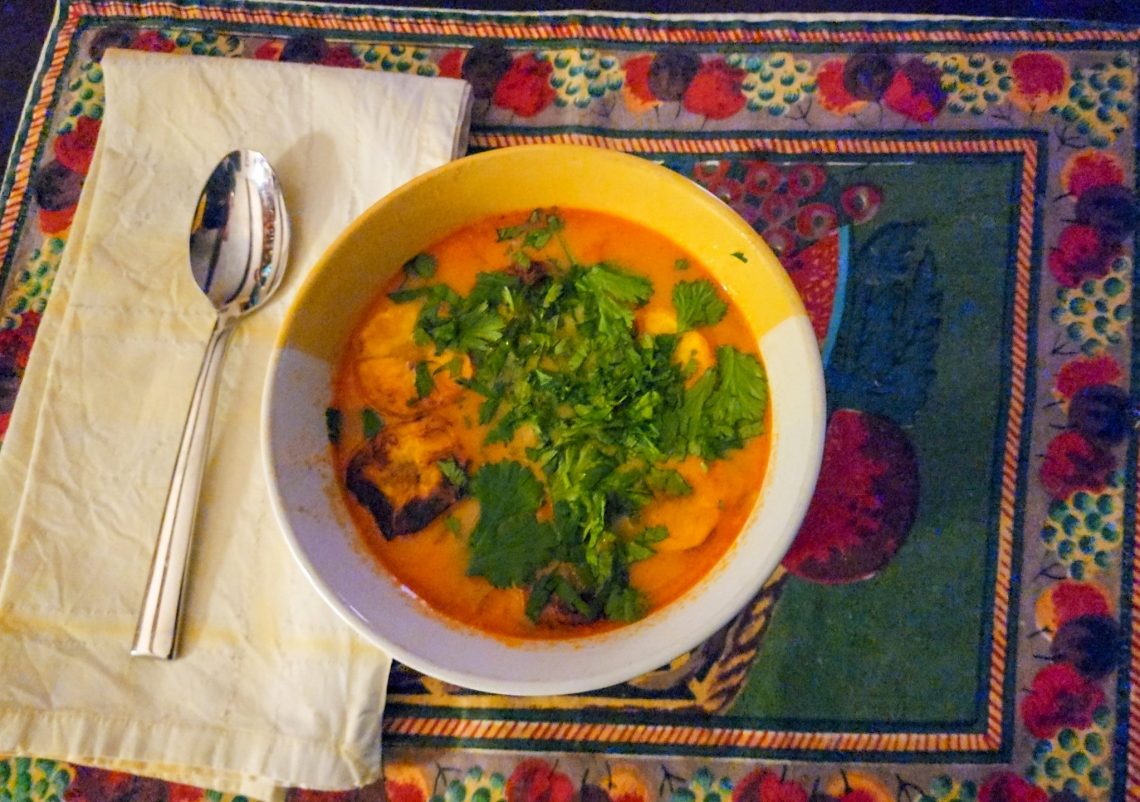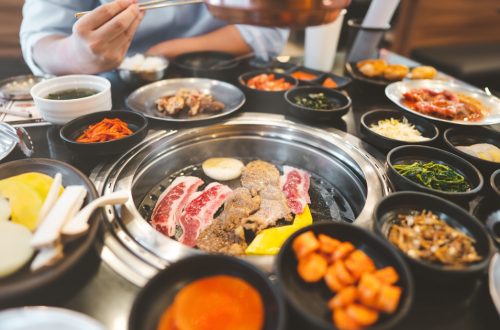
International Inspirations in New York City
From your email, please click on the title to view the photos and comment online.
We’ve just returned from a visit to New York City, and one of the things I love about these trips is the ability to find new foods and food traditions in this most international of cities. That can involve wandering around the neighborhoods, especially Queens, and talking to people who have immigrated from other countries. On this trip, we did both.
We stopped for a drink after a junket to the Lower East Side of Manhattan, and since it was midafternoon and not too busy, we were lucky to get talking with the bartender, Beatriz Almeida, who hails from Brazil. She told me about one of her favorite dishes, Moqueca Bahiana, a fish stew from the Bahia region. She promised to send it if I got in touch after returning home.
The real queen of Corona
The next day, we headed over to Corona, Queens. In the past, we’ve dined on Greek and Egyptian cuisine in Astoria and Chinese food in Flushing, where Chinatown is larger than Manhattan’s. Queens is one of the most densely populated regions in the U.S. Almost half the residents are foreign born; more than 130 languages are spoken. And these immigrants have brought their food traditions with them.
Across Queens you can walk streets that entice you with an endless variety of international flavors. You can expect to find the cuisine of France or French Canada, Switzerland, Lebanon, Nigeria, Mexico, Tibet, Guatemala, Korea, Indonesia, and the Philippines – I could go on. The diverse influences provide opportunities for chefs to experiment, as well. One restaurant, for example, offers a Peruvian/Chinese fusion.
Our plan was to visit the Louis Armstrong House Museum, which was well worth the trip in and of itself. The subway’s Corona station on the #7 line put us squarely in the midst of the diaspora from South and Central America. Just outside the station, more than two dozen food stands and food trucks offer everything from grilled pork, chicken, and tripe to sweet corn and hominy on the cob. Your plate might be a corn tortilla or a banana leaf. And the vendors just might offer a taste.
While it was tempting to try some of the street food, we had planned on dinner at Leticias, an Ecuadorian restaurant we’d read about in The New York Times. We started with a couple of cocktails: the hank, featuring whisky and a flaming lime, and the labia made with pisco, a brandy distilled from fermented grape juice, and sugar-coated blueberries. They were unusual (to us) and outstanding. For our meals, I ordered mega bandeja paisa, a slice of grilled beef with sweet plantain avocado, rice and beans, chicharron chorizo, and a fried egg. Mrs. Farmboy had the fritada Leticias, an assortment of fried pork ribs nestled on a bed of hominy and fava beans, served on a long wooden platter crowned with a carved pig’s head. It was all delicious.
Of course, I wanted to try something at home. I looked up moqueca, but could only find a vegetarian version. I was able to practice what chef and cookbook author Samin Nosrat calls anchoring: choosing a main element of a dish and making it the foundation on which you build a meal. The anchor I chose was the founding flavors of Ecuador and northern Brazil, built with chilis, black pepper, cilantro, palm oil, and annatto seeds. I used coconut milk and locally caught cod for a delicious seafood stew. I was able to purchase a plantain, which I sliced and lightly fried for a tasty garnish. I’ll be trying it again.
Moqueca Bahiana
Meanwhile, I’ve since heard from Beatriz, who is a former chef. She generously shared her insights as well as her recollection of her mother’s recipe. She wrote, “The moqueca mixes the Portuguese influence that brought the stews to Brazil. Each one showcases another culinary influence during the Colonial time. For example, the Moqueca Capixaba is made with fish stock and annatto seed oil, which gives a vibrant red color to the dish.
“The Moqueca Bahiana is made with coconut milk and palm oil, aziete de dendé. Dendé is an African palm tree from the Angola region. It has a very strong and characteristic flavor and is used in many traditional dishes in Bahia, like the acarajé, vatapá, caruru, Zinxim, and bobó. The coconut milk is also from the African influence used in savory and sweet dishes either in Africa or Brazil.”
I’ll definitely be trying the Moqueca Bahiana very soon. As for my own concoction, all I needed was some advice and inspiration. You, too, can do your own anchoring. Want to make a dish taste a little different? Just choose the main elements and do a little experimentation on your own.
Please click on the headline to view the blog on the website. You can log in and comment at the end of the blog to share your thoughts and start a discussion, or suggest a topic for Farmboy in the Kitchen.
If you’d like to share the blog, click on the Facebook icon or one of the others. Thanks!





One Comment
Tom Stites
Closer to home, strung along Cambridge Street in Cambridge, is a Portugese/Brazilian neighborhood with several restaurants. My favorit is Muqueca, and it’s menu offers an extensive array of moquecas and other Brazilian dishes. Haven’t been there for a too long. Thanks for the reminder!